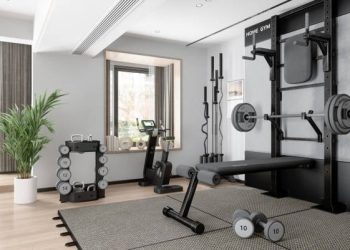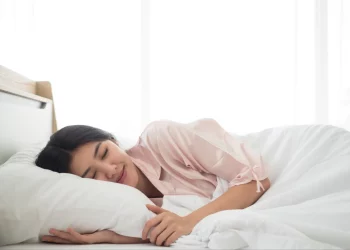Table of Contents
Life can be hectic at times, and it can be difficult to find the time and space to relax, practice mindfulness, and unwind. Though you may not be able to create space in your life to go outside the home to take a class or be mindful, there are ways you can make comfort spaces in your home to encourage mindfulness. Your home is a space for you to take care of your needs, and adapting it over time can be an exciting way to feel more happy, healthy and rested.
Regardless of how much space there is in your home, there are plenty of ways to optimize it to help you practice mindfulness on a regular basis. This is especially helpful for individuals who work from home, or who spend a lot of time in their home on a daily basis. The space that you spend time in can help you relax and unwind with a few simple tricks.
What Is Mindfulness?
Mindfulness is a psychological technique where you find ways to focus on the present moment. There are a variety of ways to practice mindfulness, but many of them involve meditative practices. Sometimes it’s as simple as connecting to your breath, and giving yourself the space to clear your mind. Though it can be challenging to find time to practice mindfulness, there is plenty of evidence that shows how beneficial it can be at reducing stress.
Mindfulness essentially gives you and your mind a break from thinking about the responsibilities in your life. It can help you feel more calm in stressful situations, and it also helps relax your nervous system and connect you to your body. Some common mindfulness practices are yoga, meditation and controlled breathing.
Though some people are hesitant to start mindfulness practices, it can be extremely simple to add more of it to your life. Mindfulness can help people express gratitude, and it also has an impact on the body. Relieving stress in this way has been shown to help with a variety of health issues, and can be beneficial in treating many mental health disorders.
Mindfulness practices are beneficial for everyone, regardless of their age or gender. By implementing activities that encourage reflection into your daily life, you can feel more present and less stressed on a day to day basis. For more information on the benefits of mindfulness, check out these articles from BetterHelp. There are a variety of mindfulness techniques that can be adapted for your lifestyle.
Mindfulness At Home
To encourage mindfulness at home, pick a space that feels comfortable to you. This could simply be a designated corner in your room, or a room that you optimize to be your wellness space. By finding objects that help you relax, you can create a comfort zone that you love. Some people find that certain scents can also help them relax. The practice of lighting a candle, or adding essential oil in your diffuser can set you on the right track to unwind and take time to take care of your mental wellbeing.
When you go to engage in mindfulness activities, make it a priority to be fully present in what you’re doing. Silence or turn off your phone, and let anyone else in the household not to disturb you. Though you may have responsibilities and stressors on your mind, giving yourself allotted time to connect to your mind and body is an important act of self-care. It may feel daunting to get started, but over time, it will become habitual.
Don’t know where to start with mindfulness? Thankfully, there are plenty of free and affordable resources out there for you. There are plenty of free online videos that offer guided meditations, or yoga classes that are easy to follow. You can also look into certain apps for your phone, such as Headspace. These apps range in what they offer, from short meditations and body scans, to daily affirmations that can help you affirm your value and importance.
Outside of your designated wellness space, you can also integrate mindfulness tools around your home. Add comforting objects around your home that relax your senses. Plants, candles and natural light are all things that can help people feel more comfortable at home. It’s also important to purge your home of items that can add clutter and stress. Make an effort at least once a year to get rid of things that you no longer use, or are no longer important to you. By creating space in your home, you give yourself the chance to breathe.
The Little Things Add Up
Mindfulness practices get the best benefits when it’s done consistently. It’s best to take small steps over a period of time, rather than try to make major changes immediately. The little things add up over time, and the long term benefits are worth the additional effort that you put in. Mindfulness is an important way to reconnect with your mind, your body and your emotional wellbeing.
There are plenty of ways to practice mindfulness that don’t involve meditation. Other activities include journaling, or taking a walk outside in the sunshine. Some people find that they’re able to unwind and be more present when they’re doing an activity they enjoy, like cooking. While others may practice mindfulness in simple ways, like making an effort to be fully present and engage their senses while they’re eating. To be more mindful overall, you may want to try a combination of practices.
Carving out time when you’re busy may feel impossible, but doing so on a regular basis can have a positive impact on many aspects of your life. You may find that you’re able to be more productive in other aspects of your life, and that conflict resolution is easier for you. By connecting to yourself, you’re better able to express your thoughts and feelings. Mindfulness practices can also help you learn more about yourself as an individual and make you feel more confident in your day to day life.
Marie Miguel Biography
Marie Miguel has been a writing and research expert for nearly a decade, covering a variety of health- related topics. Currently, she is contributing to the expansion and growth of a free online mental health resource with BetterHelp.com. With an interest and dedication to addressing stigmas associated with mental health, she continues to specifically target subjects related to anxiety and depression.








